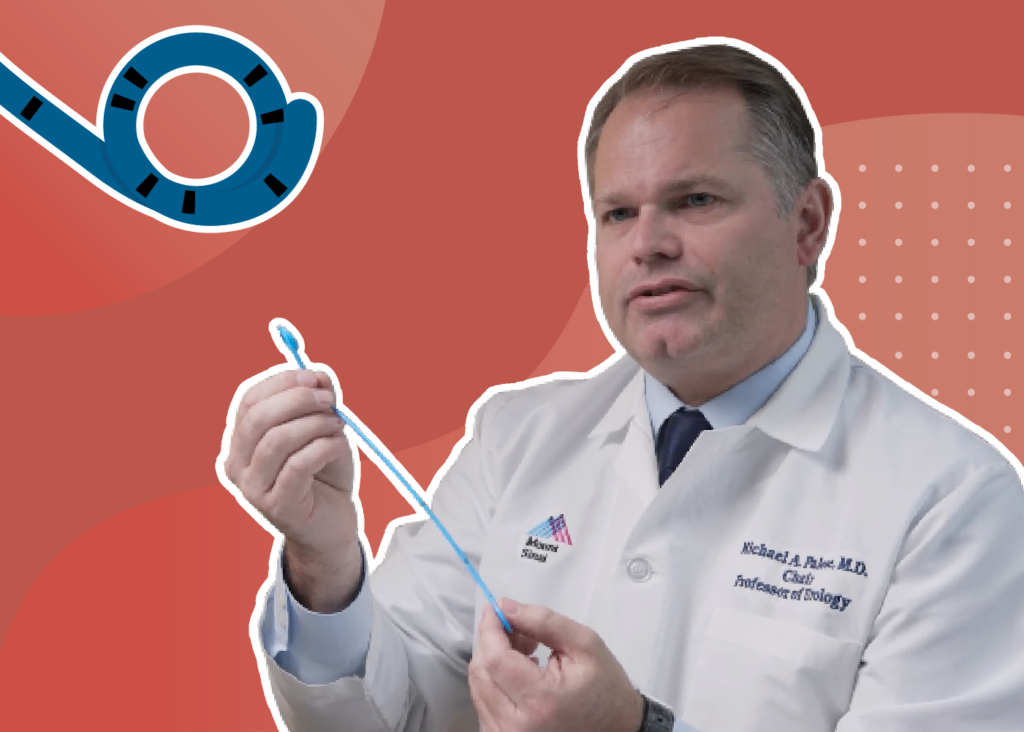Did you know a camera has to be inserted into your body for stent placement and removal?! Sure sounds gnarly, but there’s no need to worry. Dr. Michael Palese, a leading authority in the research and treatment of kidney diseases, tells us all about cystoscopies and stent removal.
Stents – Sounds familiar! But what exactly is it and where does it go?
A stent is a small, thin, hollow plastic tube that keeps the ureters open, ranging from 10 to 12 inches long. One end sits inside the kidney, while the other remains inside the bladder. It helps to drain the urine from the kidney to the bladder, which helps prevent blockage from stone fragments and swelling after kidney stone procedures.
A camera in my body?! What should I expect from a cystoscopy?
A cystoscopy is a procedure where a camera (known as a cystoscope) is inserted through your urethra and into the bladder. It allows urologists to get a better visualization of your urinary system. Then, a stent will be inserted into the ureter, up the kidney. With the help of a cystoscope, urologists can treat diseases inside the bladder; inside the prostate for men, and in the urethra for women.
During a cystoscopy, you will be lying on your back. You may feel the insertion of the cystoscope camera, but you shouldn’t feel any pain as it’s usually performed under local anesthesia. Temporary side effects such as increased urination and frequency are common, but you won’t feel a thing after a day or two!
My stent hurts! Should I be worried?
While most patients tolerate stents very well, it’s not uncommon to get stent pain. Since the stent sits in your bladder, this can cause some physical irritation or spasms when it rubs against the bladder. You may experience some pain in your flank and abdominal area.
You may also see some blood or other debris inside the urine. Thankfully, stent pain can be managed with a combination of drugs, such as anti-inflammatory medications and antispasmodics, or other drugs that will relax the bladder muscle. I also recommend using things like heating pads or ice packs, even taking a warm bath or hot shower!
I was told to remove my stent on my own. How do I do that?
A self-removal stent has a string hanging out of the urethra. We usually tape it to the inner thigh for women, while men have it taped to the penis.
When removing your stent, slowly and steadily pull the string attached to your stent. Make sure that the entire stent comes out. You may experience some spasms, flank pain, or even a little bit of blood. These are all completely normal and will subside in time.
If you are unable to remove your stent, head back to your urologist’s office and he or she will remove it with a cystoscope.
This interview has been edited for length and clarity.
Dr. Palese is the Chairman of Urology for Mount Sinai Downtown and Mount Sinai Beth Israel in New York. He specializes in complex kidney stone disease using endourology, laparoscopy, laser surgery and robotics surgery.





